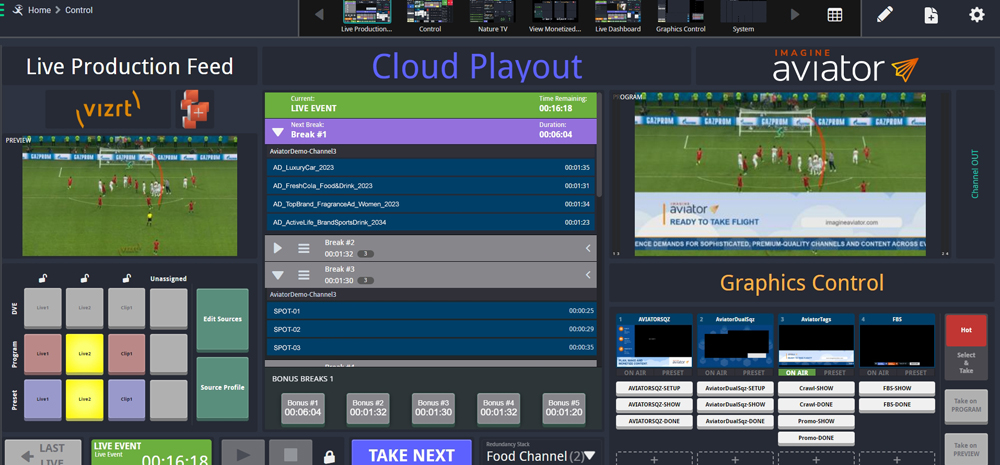
For Master Control, Broadcasters Lean On Hardware And Hubs

While some broadcasters are moving toward the public cloud for the playout of recorded programming and commercials, many stations are still investing in traditional on-premise hardware for their master control functions, according to technology vendors.
Station groups seeking greater efficiency in master-control operations for their core channels are also continuing to rely on “hubbing” models where playout and traffic functions are consolidated at a single location, either an individual station or third-party data center. New investments in cloud playout are mostly directed at over-the-top (OTT) channels or disaster recovery (DR) systems.
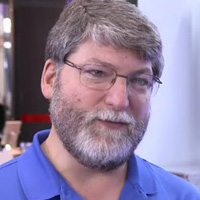
John Mailhot
“Master control still comes in all the shapes and sizes,” says John Mailhot, CTO, networking and infrastructure at Imagine. “A lot of the focus in the world in media is about the channel in the box, or channel in the cloud. But truthfully a traditional master control processor with playout servers and discreet automation is still a viable design for people with the right combination of factors. It all depends what you’re trying to do and what your budget is.”
Broadcasters Veer Away From “Anything Radical”
Imagine sells traditional automation software, master control switchers and playout servers, in addition to newer multifunction “channel-in-a-box” playout systems based on its modular Selenio Network Processor and Aviator software to control playout on the Amazon Web Services public cloud. The company still sees stations investing in traditional master control equipment, including “one box, one function-type systems,” adds Andy Warman, SVP, product for Imagine.
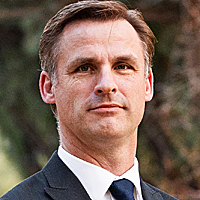
Andy Warman
“The older trends are still there,” Warman says. “People will do refreshes in master control, but oftentimes they’re not looking to do anything radical. They’re looking to sustain the business, to operate the business in an effective way. Sometimes certain technology choices just don’t work for all customers. There are a number of different ways to tackling it, from very traditional, which we still sell a lot of, to very new cloud-oriented, which we’re selling a reasonable amount of.”
Evertz has made inroads in cloud playout with its Mediator automation and control software for large-scale multichannel environments, like Fox’s new cloud-based broadcast center in Tempe, Ariz. But on the local station front the vendor is currently getting a lot of inquiries about traditional on-premise hardware like master control switchers, says Mo Goyal, Evertz senior director of business development, as stations look to replace aging HD-SDI equipment they installed over a decade ago in the initial conversion from SD to HD. That includes station groups that may be considering going to a hub-and-spoke model but aren’t ready to make that big investment yet, which can include real estate and connectivity costs.

Mo Goyal
“They’re trying to find technology to fill the gap for a couple more years and try not to change it too much,” Goyal says. “We’ve definitely seen a steady increase in questions about getting new traditional master control. We’ve seen a lot of requests for a 3025 EMC [Evertz’s traditional 3 gig HD/SDI master control switcher], adding that and getting some more channels, or maybe updating the hardware to give them a couple more years. It’s a cost-effective approach, and it’s an incremental investment versus a full-blown, rebuild everything from scratch.”
Channel-In-A-Box Growth Continues
Playbox NEO director of operations Van Duke is seeing “good resilience” in his company’s master control business, with customers continuing to upgrade older facilities to new channel-in-a-box products.
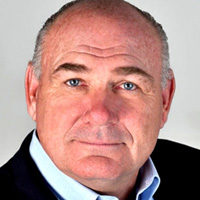
Van Duke
“We’re still seeing growth in new channels coming on, with streaming to OTT, but for scheduled content playout,” says Duke, who added that PlayBox NEO has just inked a deal with a media conglomerate to provide playout for a number of event-based OTT sports channels.
A new addition to the product line in the last six months that has received good customer feedback is the “Playbox NEO Media Gateway,” which gives remote access to the company’s channel-in-a-box product. That allows engineering or production staff to remotely monitor OTT streams as well to direct functions like transcoding incoming content feeds.
Duke says the remote capability was developed in response to the necessities of COVID-19, but that many clients want to continue to work remotely now that the world has mostly returned to normal.
“Our customers say, ‘Why can’t we still operate this way? It’s much more efficient, we don’t need to be strapped to the office.’” Duke says. “Our clients are adaptable, and generally don’t have large staffs.”
Duke sees a slow migration to running playout from the public cloud, and recently did a deal for its cloud master control software with Cala TV, which provides weather coverage of the Caribbean. “They didn’t want to be purchasing hardware anymore, so they decided to put it all in the cloud.” But he says in general, the cloud is only “cheaper if you don’t have brick and mortar [infrastructure].”
Launching FAST In The Cloud
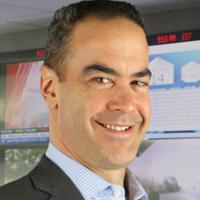
Jason Kornweiss
Jason Kornweiss, VP of strategic solutions for systems integrator Diversified, is seeing new investment by broadcasters in both outsourced playout and cloud playout in order to launch FAST channels, which are often stitched together from a station group’s archived content in order to create a linear look and feel. Cloud playout specialist Amagi is enjoying the most growth in the space, primarily due to its ability to rapidly deploy a new channel.
“They can get a channel on the air in 30 days, and that’s just not possible in an on-the-ground build, whether it be in a hub and spoke model or in an on-prem local master control model,” Kornweiss says.
Helping Amagi’s cause, as well as other cloud players, are continued delays in delivery of traditional hardware that have impacted some on-prem builds, he adds. Broadcasters looking to quickly get to market and generate revenue with a new FAST channel don’t seem to mind spending a little more on a monthly basis for the cloud’s speed, compared to what an on-prem build would have cost over time.
“If you just look at capability, that is the supreme advantage,” says Kornweiss, who admits that the cloud also provides a hedge against unsuccessful launches as a cloud implementation can be quickly spun down.
On the other hand, most local broadcasters still think that traditional automation software systems have more of the features they need to deal with their dynamic schedule of live news, breaking news and breaking weather compared to the public cloud options.
“There’s still a bit of reluctance in putting a flagship broadcast channel on a cloud playlist, largely because of the features and functions that exist on a more traditional linear playlist like Grass Valley Morpheus,” Kornweiss says. “It’s packed with more features and capability out of the box than a lot of the cloud services are.”
For his part, Warman disputes the notion that Imagine’s Aviator cloud software has less functionality than its traditional products like ADC or D-Series automation. He says the company was “fairly surgical” in including features like live switching and DVE [digital video effects) in order to match on-prem master control capabilities.
“We enabled the most sophisticated functionality from the beginning,” Warman says. “Typically, what you see is people migrating into the cloud will start with the simpler channels, and then they add features over time. We actually went the other way around. We put in all the complex features up front, and we’re in the process of simplifying.”
DR solutions, along with thematic channels, are where Imagine has seen some of the biggest traction for its cloud software. But Mailhot says customers expect the same basic functionality from a DR solution in the cloud as they do from their on-prem system.
“They want to have the same channel quality,” Mailhot says. “They don’t want to be explaining to advertisers or end customers that, ‘Well, I was on DR last Tuesday, so your graphic didn’t run.’”
Hybrid Approaches
Sony unit Crispin Corp. first targeted DR as the most logical application of the cloud and has provided cloud-based DR systems for several commercial broadcasters as well as PBS stations. The company is also using Sony’s Ci cloud platform, which runs on AWS, as the foundation of the hub system it has created in partnership with Public Media Management (PMM).
The PMM network operations center in Boston supports 19 PBS stations. It handles content acquisition, transcoding, quality assurance and delivery of nationally distributed public television content, as well as remotely monitoring and controlling playout of a standard technology stack in each station. While PMM can run playout on a 24/7 basis, local PBS stations still have local cut-in access for live programming like pledge drives.
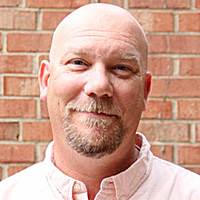
David Jones
“The PMM NOC maintains service 24/7 of monitoring, working with the Myers ProTrack solution for trafficking,” says Crispin CEO David Jones. “It monitors and handles the recording schedule information and utilizes Ci storage to go out and communicate with PBS content solutions to pull content in, store it within Ci and then distribute it as needed based off of playlist control. So, it’s full-service management, from bringing in content to actual playout.”
As it looks to expand its cloud business Crispin still sees “a little bit of trepidation about jumping fully into the cloud,” Jones says, particularly from stations that do a lot of live news and sports. He predicts a “hybrid approach” will persist for some time with stations relying on a mix of traditional on-prem hardware and cloud-based systems. He says the cloud still makes the most sense today for OTT channels and diginets, but a broadcaster needs scale for it to make financial sense.
“Where a lot of customers see the breakeven is when you start to have more than five, when you go up to 10 channels,” Jones says. “That’s when it starts to make sense, when you can put a lot of subchannels up in the cloud. You’re running your monitoring, and the solutions allow you to monitor, but you don’t necessarily have to attend to the list 24/7 at that point.”
Another vendor advocating a hybrid approach is Florical Systems, which enjoys a large footprint for its Acuitas channel-in-a-box product among big groups like Nexstar but has also tweaked its automation software for use in the public cloud. Florical SVP and GM Shawn Maynard says that early experiments in production and playout in the cloud, as well as development work by industry groups like SMPTE and the Open Services Alliance and vendors like AWS, has led broadcasters to a better understanding of the cloud’s capabilities.

Shawn Maynard
“We’re now seeing a more strategic move to the cloud, where we say OK, it’s not magic, I don’t just throw everything up in there and it comes through,” Maynard says. “It’s an orchestration of a lot of partners to create a process that handles the requirements of the business. We’re seeing people who have gotten educated on the process and are evolving to the cloud where it makes sense and using it for what it is.”
Broadcasters who have serious latency requirements are still probably looking at an “on the ground’ solution today, Maynard says. He also seeks a lot of skepticism among call-letter stations as they try to pin down the actual costs of operating in the cloud.
“That’s a big factor that needs to be resolved,” Maynard says. “But I see an evolution of getting rid of master control switchers and going to more all-in-one integrated playout on the ground, with some cloud playout, and a hybrid environment happening.”
So far, Florical hasn’t yet “decomposed” its software down to cloud-native apps, he says. Instead, its software is running in a virtual machine (VM) environment and partnering with Harmonic’s VS360 product for actual playout from the cloud. Customers set up the VM, and Florical loads its software in.
“We’re handling the asset management, doing all the automation pieces of cueing the playlist and playing it out, switching the sources and managing the inventory, and uplinking the spots into the storage and deleting them out of storage,” Maynard says. “We’re doing all of the automation piece similar to if it was on ground, we’re just utilizing the VOS360 with its capacity.”
The cloud presents challenges to software companies that are used to writing applications to run on dedicated hardware, such as an HPE or Dell server, he adds. Software that is a bit “noisy,” such as pulling multiple processes or constantly polling a router to check its current state, isn’t a problem with dedicated resources that are already paid for. But the same type of processing activity can run up computing costs in the cloud, Maynard says.
“When you build that software in a cloud environment, and in the digital world every time 0 goes to 1 the cash register rings, how you develop software and how efficient it is becomes a real conversation.”




































Comments (0)